Reviving Exegeting: ʿAlā Hāmish al-Tafāsīr at the Frontier Between Tradition and Modern Sciences
ʿAlā Hāmish al-Tafāsīr Taʿlīqāt ʿalā Tafsīr al-Jalālayn (“Marginal Notes on Tafsīr al-Jalālayn”) by Sayyed Ismaeel Shihabudheen represents a pivotal departure in Qur’anic exegesis, merging the classical framework of Tafsīr al-Jalālayn with modern hermeneutics, yet its methodological innovation remains underexplored in contemporary scholarship in social and natural sciences. While existing literature acknowledges the work’s linguistic brilliance and non-Arab authorship, few studies critically examine how it negotiates the tension between tradition and modernity, particularly its integration of scientific theories (e.g., Darwinism) and political commentary (e.g., on Kashmir) within a classical exegetical structure. This gap obscures the text’s broader implications for tafsīr studies, where its "linking" methodology, simultaneously preserving traditional norms while addressing modern dilemmas, challenges the binary between historical and contextual interpretation. By analysing this duality, this article illuminates how ʿAlā Hāmish al-Tafāsīr redefines the boundaries of Qur’anic commentary, offering a model for future exegetical works that seek to reconcile orthodoxy with contemporary relevance. Moreover, it explores how the work straddles both classical hermeneutical techniques and modern interpretive demands, negotiating the deeper conflict between traditional authority and contemporary rationality.
Authorial Vision and Challenges
The pre-existing tafsīr landscape in South Asia suffered from two limitations: reliance on Isrāʾīliyyāt (fabricated narratives) and a reluctance to address contemporary issues. Shihabudheen’s students, frustrated by the stagnation, urged him to create a work that was both intellectually rigorous and accessible. His response was a tafsīr that critiqued Israeli interpolations in classical commentaries while incorporating modern scholarship—a method inspired by Fī Ẓilāl al-Qurʾān by Sayyid Qutb, but distinct in its non-Arab authorship and Kerala-specific cultural resonance. By prioritising Arabic (despite Kerala’s Malayalam-centric tradition), he ensured the work’s universality, appealing to Arab academies unfamiliar with Indian exegetical contributions.
Shihabudheen’s ambition faced practical hurdles: scrutinizing centuries of tafsīr literature to purge Isrāʾīliyyāt, reconciling scientific theories with Qur’anic verses, and maintaining linguistic precision in Arabic—a language he mastered despite his non-Arab roots. His methodology drew from over 40 classical and modern sources, including Tafsīr al-Jalālayn (for conciseness), Ibn Kathīr (for Qurʾan-by-Qurʾan interpretation), and Al-Kashshāf (linguistic analysis), alongside scientific texts. Notably, he leveraged computational tools like Maktabat al-Ḥadīth al-Nabawī to verify ḥadīth, blending traditional scholarship with technological modernity.
The Revolutionary Tafsir of Sayyed Ismaeel Shihabudheen: Bridging Tradition and Modernity
The late 20th century in Kerala witnessed a profound tension between religious traditionalism and modern thought. During the 1970s and 1980s, some Islamic scholars like Vakkom Moulavi actively discouraged engagement with modern sciences, viewing them as a threat to religious orthodoxy. It was in this climate of intellectual resistance that Sayyed Ismaeel Shihabudheen, a multilingual scholar fluent in Arabic, Hebrew, and Syriac, composed his groundbreaking work, ʿAlā Hāmish al-Tafāsīr. Published in 1998, this seven-volume exegesis marked a turning point in Qur’anic scholarship—not only as the first comprehensive Arabic tafsir from Kerala but as a pioneering work that harmonised scriptural interpretation with contemporary scientific discourse.
Shihabudheen’s approach was revolutionary. Where traditional tafsirs relied on established medieval commentaries, his work engaged directly with modern disciplines, from astrophysics, by which the Qur’anic description of lunar fissures was interpreted in light of NASA’s geological findings (Q54:1), to evolutionary biology, by which Darwinian theory was situated within an Islamic framework (Q23:12–14). This interdisciplinary boldness drew sharp criticism from conservative clerics but also captured international attention. The Qatari Ministry of Awqaf, recognising its scholarly merit, took the unprecedented step of sponsoring its publication—an honour rarely extended to non-Arab exegetes. By the early 2000s, universities in Cairo, Kuala Lumpur, and Doha had incorporated the text into their curricula, cementing its status as a work of global significance.
What set ʿAlā Hāmish al-Tafāsīr apart was its author’s unique intellectual trajectory. Unlike many of his contemporaries, Shihabudheen refused to dismiss modern science as inherently secular or corrupting. Instead, he argued that empirical inquiry could deepen, rather than undermine, Qur’anic understanding. His linguistic prowess, which was later praised by Al-Azhar scholars for the classical elegance of his Arabic prose, enabled him to navigate between traditional scholarship and contemporary debates with rare authority. Yet his work was not merely an academic exercise; it was a response to the needs of his students, who sought a tafsir that could speak to the complexities of the modern world without sacrificing theological rigour.
Composition: Bridging Eras
The nine-year composition process (H 1419–1428) was driven by Shihabudheen’s resolve to address gaps in Kerala’s tafsīr literature, where vernacular translations dominated. His students’ demand for a concise, modern exegesis led to a work that condenses Tafsīr al-Jalālayn’s brevity while expanding its scope. Interestingly, the text’s structure follows a layered approach: A primary layer involves Qur’anic verses and Jalālayn’s base text; a secondary layer represents Shihabudheen’s Arabic commentary, integrating Fi Ẓilāl al-Qurʾān ( of Sayyid Qutb) as a central reference for thematic coherence; and a tertiary layer presents interdisciplinary annotations.
Naming and Structural Innovation
The title ʿAlā Ḥāmish al-Tafāsīr Taʿlīqāt ʿalā Tafsīr al-Jalālayn reflects its hybrid nature, as its composition and naming reveal its unique approach. Unlike conventional exegeses, on the one hand, Shihabudheen’s work functions both as a ḥāshiyah (gloss) that predicates upon Tafsīr al-Jalālayn due to its presentation of variegated taʿlīqāt (marginal commentary) on it deriving from his personal readings, and on the other , as an independent exegesis which simultaneously critiques and modernises its root text. This is evident in his treatment of Jalālayn’s ambiguities—such as the mystical letters (ḥurūf muqaṭṭaʿah, e.g., Alif-Lām-Mīm)—where he offers linguistic and scientific explanations absent in classical commentaries.
Methodological Framework of ʿAlā Hāmish al-Tafāsīr
As earlier stated, Sayyed Ismaeel Shihabudheen's exegetical methodology in ʿAlā Hāmish al-Tafāsīr represents a sophisticated synthesis of classical Islamic hermeneutics and modern interdisciplinary engagement. The work follows a meticulously structured approach that begins with the foundational placement of Qur'anic verses at the top of each page, immediately followed by the concise commentary from Tafsīr al-Jalālayn. This dual-layered foundation serves as the springboard for Shihabudheen's original contributions, where he systematically expands upon the classical text through multiple interpretive lenses.
The commentary unfolds through several distinct yet interconnected methodological phases. First, Shihabudheen provides direct verse interpretations, maintaining fidelity to traditional exegetical principles. He then introduces what he terms "special affairs" - nuanced examinations of each verse that incorporate contemporary scientific perspectives, ranging from cosmological observations to biological theories. This scientific engagement is carefully balanced with evidentiary support, creating what might be termed a "tafsīr of verification" that bridges revelation and empirical observation.
A particularly engaging aspect of the methodology lies in its responsive dimension. Following the interpretive sections, Shihabudheen counterpoints rebuttals to common criticisms of Islam, transforming the work into both an exegetical text and an apologetic discourse. Strictly, this methodological framework not only draws deeply from classical Islamic interpretive traditions but also innovates their application. Shihabudheen establishes a clear hierarchy of sources, beginning with the Qur'an's self-referential interpretive capacity (tafsīr al-Qur'ān bi-l-Qur'ān), then moving to Prophetic traditions (tafsīr bi-l-Sunnah), and finally incorporating the perspectives of the Companions and early Muslim scholars. This tripartite structure mirrors classical methodologies but is distinguished by its rigorous critical engagement with each source category.
Linguistic analysis forms another pillar of the methodology. Shihabudheen employs Arabic philology not merely as a technical exercise but as a means to uncover layered meanings in the text. His approach to language encompasses classical Arabic poetry, pre-Islamic proverbs, and multiple qirā'āt (recitational variants), demonstrating how linguistic mastery can illuminate Qur'anic exegesis. The work frequently employs specific interpretive markers like "al-ishārah fī'l-āyah" (the indication in the verse) to signal nuanced readings that go beyond surface meanings.
What distinguishes this methodology most profoundly is its interdisciplinary reach (see the table below). Shihabudheen seamlessly incorporates references to classical texts across multiple Islamic sciences - from Ibn Kathīr's exegesis to Rūmī's mystical poetry - while simultaneously engaging with modern scientific discourse. The structural and methodological choices in ʿAlā Hāmish al-Tafāsīr reflect a conscious effort to create an exegetical work that is simultaneously rooted in tradition and responsive to contemporary intellectual challenges. By maintaining classical forms while innovating in content and approach, Shihabudheen crafts a tafsīr that speaks to both scholarly and lay audiences, bridging temporal and disciplinary divides in Islamic thought.
|
Reference |
Author |
Discipline |
Role in ʿAlā Hāmish |
|
Tafsīr Ibn Kathīr |
Ibn Kathīr |
Exegesis |
Primary Qur’an-by-Qur’an model |
|
Al-Kashshāf |
Al-Zamakhsharī |
Linguistics & Theology |
Rhetorical analysis of verses |
|
Ṣaḥīḥ al-Bukhārī |
Al-Bukhārī |
Hadith |
Authenticating prophetic traditions |
|
Al-Mathnawī |
Rūmī |
Mysticism |
Ethical parables for modern readers |
|
Aḥkām al-Qurʾān |
Ibn al-ʿArabī |
Jurisprudence |
Legal applications of verses |
|
Al-Burhān fī ʿUlūm al-Qurʾān |
Al-Zarkashī |
Qur’anic Sciences |
Structural analysis of sūrahs |
|
Mufradāt Alfāẓ al-Qurʾān |
Al-Rāghib |
Lexicography |
Semantic precision in key terms |
(This table shows major references of ʿAlā Hāmish al-Tafāsīr across various disciplines.)
Additionally, the exegetical methodology of ʿAlā Hāmish al-Tafāsīr draws upon an extensive corpus of classical Islamic scholarship, including Qur'anic commentaries (Baḥr al-ʿUlūm, Al-Wasīṭ, Al-Taysīr, Al-Kashshāf, Aḥkām al-Qurʾān, Mafātīḥ al-Ghayb, Al-Baḥr al-Muḥīṭ, Aṭhā’vīlat al-Najmiyyah, Al-Jāmiʿ li Aḥkām al-Qurʾān, Taʾwīlāt al-Qushayrī, Tafsīr al-Ḥaddādī, Tafsīr al-Kawāshī, Tafsīr al-Jalālayn, and Irshād al-ʿAql al-Salīm), Qur'anic sciences (Asbabunnuzul, Al Burhan, and Al Ithqan), Hadith collections (Ṣaḥīḥ al-Bukhārī, Jāmiʿ al-Tirmidhī, Athargheeb val Tharhib, and Al Maqāṣid al-Ḥasana), mystical treatises (Al-Risāla, Al-Futūḥāt al-Makkiyya, Al-Fuṣūṣ, Talqīḥ al-Afhām, and Al-Mathnawī), jurisprudential works (Badāʾiʿ al-Ṣanāʾiʿ, Tabyīn al-Ḥaqāʾiq, and Al-Ashbāh wa al-Naẓāʾir), theological discourses (Risālat al-Qaḍāʾ wa al-Qadr), translational studies (Ṭabaqāt al-Shāfiʿiyya), and linguistic references (Mufradāt Alfāẓ al-Qurʾān, Al-Nihāya fī Gharīb al-Ḥadīth, and Al-Qāmūs al-Muḥīṭ), creating a comprehensive interpretive framework that bridges traditional Islamic scholarship with contemporary exegetical needs.
In general, Shihabudheen amalgamated three distinctive techniques that were prevalently limited to certain disciplinary writings into his exegeting: (1) structural clarity through chapter-heading repetitions, (2) verse-featuring that links Qur’anic passages to Hadith and Companions’ wisdom (e.g., Bukhari/Muslim citations), (3) polemical rigor against Isrāʾīliyyāt fabrications (e.g., on Zaynab bint Jaḥsh’s libel). Theologically, he champions Sunni-Ash‘ari orthodoxy while rebutting Salafi and Mu‘tazili deviations, using Sūrah al-Fātiḥah to validate tawassul. Contemporary engagement includes critiques of women’s mosque attendance and modern political analysis (e.g., on Kashmir), blending traditional tafsīr with urgent socio-religious discourse. This fusion of form, theology, and relevance adds strength to his methodological framework. In short, his methodology can be featured in three ways: (1) textual fidelity to classical tafsīr traditions, (2) interdisciplinary verification using 20th-century scholarship, and (3) contextual relevance to modern socio-political issues.
Bridging Revelation and Reality: Scientific Exegesis in ʿAlā Hāmish al-Tafāsīr
Shihabudheen's commentary revolutionises Qur'anic interpretation by harmonising scripture with scientific inquiry. His cosmological analysis of Q54:1 ("The Hour has drawn near, and the moon split") transcends traditional eschatological readings by correlating the verse with NASA's discovery of lunar rifts (300km long), while maintaining theological integrity. Similarly, his linguistic unpacking of kawwara in Q39:5 ("He wraps night over day") demonstrates Earth's sphericity through the precise verb morphology of classical Arabic. The exegesis remarkably interprets Q27:88's 'moving mountains' as plate tectonics (a 25,000km daily rotation), rejecting apocalyptic literalism in favour of geophysical evidence. Even terrestrial design (Q2:22's "earth as a spread-out bed") becomes a discourse on planetary crust composition, contrasting crystalline structures with Earth's permeable surface.
This scientific framework extends to social domains: Darwinian evolution is contested through biological verses (Q23:12-14), while economic principles derive from Qur'anic prohibitions of ribā (interest). Political conflicts, such as those in Kashmir, are analysed through Islamic justice paradigms (Q4:135). By anchoring modern knowledge in tafsīr tradition—citing Ibn Kathīr alongside geological surveys—Shihabudheen crafts a uniquely integrative hermeneutic.
Conclusion
ʿAlā Hāmish al-Tafāsīr redefines Qur’anic exegesis by systematically merging classical Islamic hermeneutics with empirical science and contemporary socio-political analysis. The study demonstrates how Shihabudheen’s work establishes a new methodological paradigm, critiquing Isrāʾīliyyāt through computational verification, interpreting cosmological verses via modern astronomy, and addressing issues such as Darwinism and Islamic economics through Qur’anic textual analysis. Its non-Arab authorship and Kerala origins challenge traditional exegetical geography while its adoption by Arab institutions validates its scholarly rigour. The research confirms the tafsīr’s success in creating an authoritative bridge between 15th-century Sunni scholarship and 21st-century knowledge systems, demonstrating the Qur’an’s adaptive interpretability without compromising its theological integrity.
About the author:
Muhammed Sinan Kanneth is a postgraduate student in the Department of Study of Religion at Darul Huda Islamic University. His areas of interest spread over Islam, classical texts, religion and culture, with a disciplinary focus on philosophy, sociology and anthropology.
References
1. Shihabudheen; Sayyed Ismaeel Shihabudheen; على هامش التفاسيرتعليقات عللى تفسير الجلالين; Panoor; Nibrasul Ulama Students Association, Jamia Zahra, Mokeri, Panur, Kannur, Kerala, India; 1998.
2. Hameed; Abdul Hameed E.T; على هامش التفاسير تعليقات على تفسير الجلالين للسيد إسماعيل شهاب الدين؛ دراسة تحليلية منهجية سورة الرحمان نموذجا; Chemmad, Darul Huda Islamic University, 2014.
3. https://thajudeenmannani.blogspot.com/2012/04/sayed-ismaeel-shihabudheen-pookoya.html
Disclaimer
The views expressed in this article are the author’s own and do not necessarily mirror Islamonweb’s editorial stance.




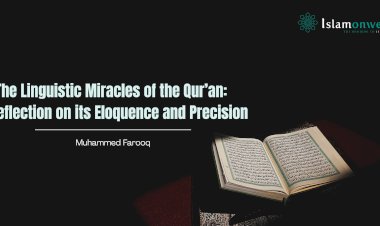
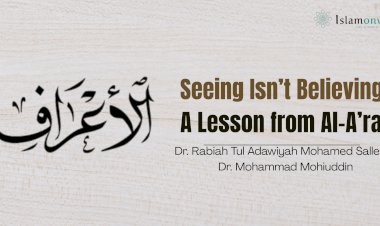


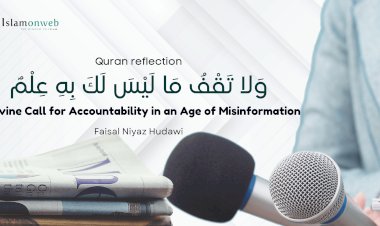
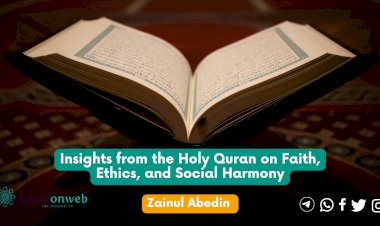












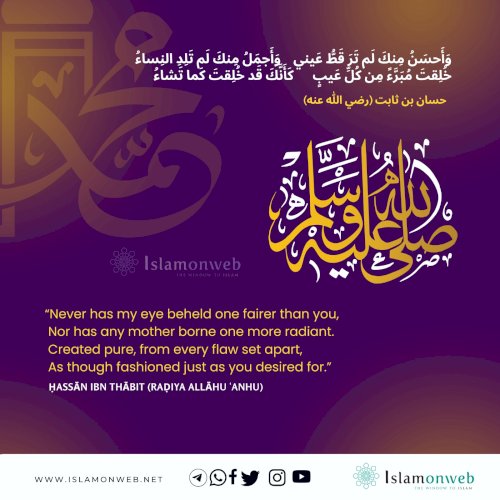

Leave A Comment